 W
WThe second USS Alaska (ID-3035) was a minesweeper that served in the United States Navy from 1918 to 1919.
 W
WUSS Amagansett (SP-693) was a United States Navy patrol vessel and minesweeper in commission from 1917 to 1920.
 W
WUSS Anderton (SP-530), originally to have been USS Raymond J. Anderton (SP-530), was a patrol vessel and minesweeper that served in the United States Navy from 1917 to 1919.
 W
WThe first USS Ardent (SP-680) was a United States Navy patrol vessel and minesweeper in commission from 1917 to 1921. Acquired upon the entry of the United States into World War I, the ship served in New England during the war, and was sold back into private ownership in 1921.
 W
WUSS Asher J. Hudson (SP-3104), later renamed Yuma, was completed in 1891 at Camden, New Jersey, by John H. Dialogue and Sons, inspected in the 8th Naval District on 1 July 1918 and, on the 24th, was ordered taken over by the Navy. Accordingly, acquired from the Alabama Coal Transport Co. of New Orleans, Louisiana, Asher J. Hudson, classified as SP-3104, was commissioned at the Naval Station, New Orleans, on 1 August 1918, Ensign Alva Carlton, USNRF, in command.
 W
WUSS Auk (AM-38) was a Lapwing-class minesweeper acquired by the U.S. Navy after World War I for the task of removing mines that had been placed during the war.
 W
WUSS Aurora (SP-345) was a harbor tug and a minesweeper of the United States Navy.
 W
WAuxiliary motor minesweepers were small wood-hulled minesweepers commissioned by the United States Navy for service during World War II. The vessels were numbered, but unnamed. The auxiliary motor minesweepers were originally designated yard minesweepers (YMS) and kept the abbreviation YMS after being re-designated. The type proved successful and eventually became the basis for the AMS type of United States Navy minesweeper.
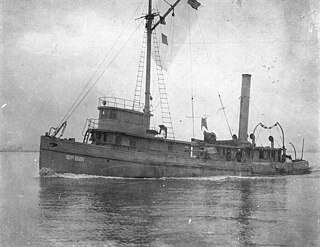 W
WUSS Breakwater (SP-681) was a United States Navy patrol vessel, minesweeper, and tug in commission from 1917 to 1920.
 W
WUSS Canary (AMc-25) was a coastal minesweeper acquired by the U.S. Navy for the dangerous task of removing mines from minefields laid in the water to prevent ships from passing.
 W
WUSS Charles P. Crawford (SP-366) was a United States Navy minesweeper and tug in commission from 1917 to 1919.
 W
WUSS City of Lewes (SP-383), later USS Lewes (SP-383), was a minesweeper and patrol vessel that served in the United States Navy from 1917 to 1919.
 W
WUSS Cockatoo was a coastal minesweeper, built in 1936 as Vashon by the Seattle Shipbuilding and Dry Dock Company, Seattle, Washington, which was acquired by the United States Navy on 23 October 1940 and commissioned as USS Cockatoo (AMc-8), on 25 April 1941.
 W
WThe first USS Comber (SP-344) was a United States Navy minesweeper in commission from 1917 to 1919.
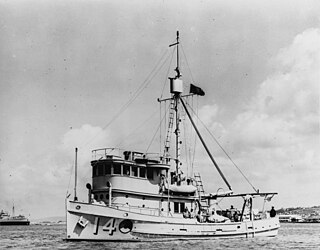 W
WUSS Condor (AMc-14) was a coastal minesweeper of the United States Navy. The ship was constructed as the wooden-hulled purse seiner New Example at Tacoma, Washington in 1937. Acquired by the U.S. Navy on 28 October 1940, converted into a coastal minesweeper and placed in service on 18 April 1941.
 W
WThe first USS Courtney (SP-375) was a patrol boat and minesweeper in commission in the United States Navy from 1917–1919.
 W
WUSS Crest (SP-339) was a United States Navy minesweeper in commission from 1917 to 1919.
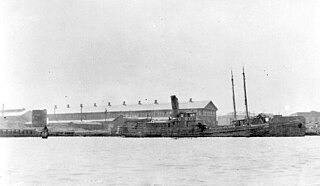 W
WUSS East Hampton (SP-556) was a United States Navy minesweeper, patrol vessel, and lightvessel in commission from 1917 to 1919.
 W
WUSS Edward J. McKeever Jr. (SP-684) was a United States Navy patrol vessel and minesweeper in commission from 1917 to 1919.
 W
WUSS Egret (AMc-24) was an Egret-class coastal minesweeper acquired by the U.S. Navy for the dangerous task of removing mines from minefields laid in the water to prevent ships from passing.
 W
WUSS Eugene F. Price (SP-839) was a United States Navy patrol vessel and minesweeper in commission from 1917 to 1919.
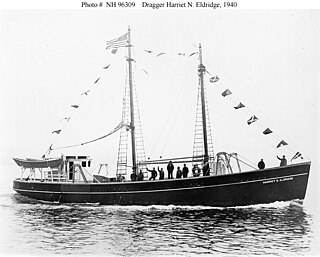 W
WUSS Flamingo (AMc-22) was a coastal minesweeper of the United States Navy.
 W
WUSS Foam (ID-2496) was a United States Navy trawler which served as a minesweeper and was in commission from 1918 to 1919.
 W
WThe fourth USS Fulton (SP-247), later USS SP-247, was a commercial tug built in 1909. She was commissioned by the United States Navy and served as a minesweeper in 1917 in the Third Naval District and returned to her previous owners two years later. She remained in service, latterly as Catherine Carroll, at least into the 1960s.
 W
WUSS G. H. McNeal (SP-312), also called George H. McNeal, was a United States Navy minesweeper in commission from 1917 to 1919.
 W
WUSS G. H. McNeal (SP-312), also called George H. McNeal, was a United States Navy minesweeper in commission from 1917 to 1919.
 W
WUSS Goldcrest (AM-78) was a minesweeper acquired by the U.S. Navy for the dangerous task of removing mines from minefields laid in the water to prevent ships from passing.
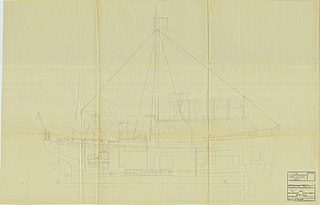 W
WUSS Grouse (AMc-12) was a coastal minesweeper of the United States Navy. The ship, formerly the New Bol, was launched in 1938 by Martinac Shipbuilding Co., Tacoma, Washington; acquired by the Navy in 1940; and commissioned on 20 June 1941 at San Diego, California, Lt. (j.g.) Theodore L. Bergen in command. After shakedown off San Diego, California, Grouse performed patrol and minesweeping duties in the 11th Naval District. Grouse was decommissioned on 26 August 1944. Struck from the Navy List on 23 September 1944, she was transferred to the Maritime Commission for disposal on 5 February 1945.
 W
WHarry L. Glucksman was a 7,198 GRT Liberty ship built by the Southeastern Shipbuilding Corporation of Savannah, Georgia, launched on 29 April 1944, delivered to the War Shipping Administration 20 May 1944, and sailing in convoy from New York to the United Kingdom on 10 June. The ship was laid up 29 May 1948 with two withdrawals from reserve 20 November 1951 – 9 June 1952 and 29 November 1956 – 31 March 1958, the second withdrawal for transporting coal to Europe. The ship remained in reserve until transferred permanently to the United States Navy which completely gutted the ship in a conversion to become a "device," designated Minesweeper, Special, MSS-1, for the Atlantic Fleet Mine Force research and development project intended to develop an unsinkable hull equipped with magnetic coils to increase its magnetic signature for the detonation of magnetic mines and using its hull pressure to detonate pressure mines. MSS-1 was placed out of service 15 March 1973 and returned to the Maritime Administration (MARAD) for disposal on 2 September 1975.
 W
WUSS James (SP-429) — also known as USS W. T. James (SP-429) — was a steam trawler acquired by the United States Navy during World War I. She was converted into an armed minesweeper and assigned to the European Theater, where she performed varied tasks, including minesweeping, patrolling, and escorting of larger ships in convoy. In 1919, while returning to the United States, she was severely damaged in a storm off the French coast, and sank. Her crew were rescued.
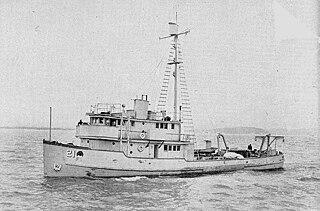 W
WUSS Killdeer (AMc-21) was a unique coastal minesweeper acquired by the U.S. Navy for the dangerous task of removing mines from minefields laid in the water to prevent ships from passing.
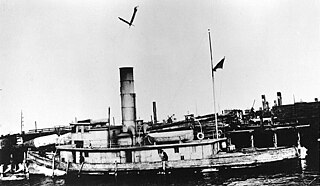 W
WUSS Knickerbocker (SP-479), was a United States Navy tug, minesweeper, and dispatch ship in commission from 1917 to 1919.
 W
WUSS City of Lewes (SP-383), later USS Lewes (SP-383), was a minesweeper and patrol vessel that served in the United States Navy from 1917 to 1919.
 W
WUSS McKeever Brothers (SP-683), sometimes written as USS McKeever Bros., was a United States Navy patrol vessel and minesweeper in commission from 1917 to 1919.
 W
WUSS Mockingbird (AMc-28) was a coastal minesweeper acquired by the U.S. Navy for use in World War II. Her task was to clear minefields in coastal waterways.
 W
WUSS Monadnock (ACM-10) was a coastal minelayer in the U.S. Navy, the third vessel named after a civil war monitor, USS Monadnock (1863) named after Mount Monadnock. The ship was built as the cargo vessel Cavalier for the Philadelphia and Norfolk Steamship Company by Pusey and Jones Corporation, Wilmington, Delaware in 1938. The Navy purchased the ship 9 June 1941 for wartime use. After decommissioning the ship was sold in June 1947 for commercial use then sold to a Panamanian company in 1949 to be renamed Karukara. In 1952 the ship became Monte de la Esperanza for a company in Bilboa, Spain transporting bananas to the United Kingdom from the Canary Islands for more than 20 years. She was later sold to the Marine Institute of Spain for operation as a hospital ship for more than 10 years serving the fishing fleet of the Canary Islands as Esperanza del Mar until becoming an artificial reef off Spain in 2000.
 W
WThe fifth USS Patapsco was a fleet tug in commission in the United States Navy from 1909 to 1925. She served the United States Atlantic Fleet and saw service in World War I.
 W
WThe first USS Patuxent was a fleet tug in commission in the United States Navy from 1909 to 1924. She served the United States Atlantic Fleet and saw service in World War I. After the end of her Navy career, she was in commission in the United States Bureau of Fisheries from 1926 to 1932 as the fisheries research ship USFS Albatross II.
 W
WUSS Pawnee (SP-699), later USS SP-699, formerly named Monoloa II, a wooden-hulled yacht, was built in 1904 by George Lawley & Son, Neponset, Massachusetts; purchased by the Navy on 26 June 1917 from Gordon Dexter of Beverly, Massachusetts; and commissioned on 1 July 1917.
 W
WUSS Pennsylvania R. R. No. 9 (SP-679), also known as USS Penn R. R. No. 9 (SP-679) and USS P.R.R. No. 9 (SP-679), was a United States Navy armed tug and minesweeper in commission from 1917 to 1919.
 W
WThe second USS Pocomoke (SP-265), later YT-43, was a United States Navy minesweeper and tug commissioned in 1917 and sold in 1922.
 W
WUSS Anderton (SP-530), originally to have been USS Raymond J. Anderton (SP-530), was a patrol vessel and minesweeper that served in the United States Navy from 1917 to 1919.
 W
WUSS Anderton (SP-530), originally to have been USS Raymond J. Anderton (SP-530), was a patrol vessel and minesweeper that served in the United States Navy from 1917 to 1919.
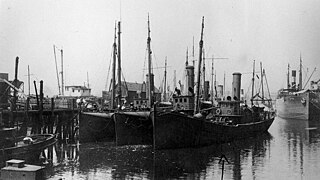 W
WThe second USS Ripple (ID-2439) was a United States Navy trawler which served as a minesweeper and was in commission from 1918 to 1919.
 W
WUSS Road Runner (AMc-35) was a coastal minesweeper acquired by the U.S. Navy for the task of removing mines from minefields laid in the water to prevent ships from passing.
 W
WUSS Robert H. McCurdy was a United States Navy patrol vessel in commission from 1918 to 1919.
 W
WUSS Rodolph (1863) was a steamer commissioned by the Union Navy during the American Civil War.
 W
WThe first USS Roselle (SP-350) was a minesweeper that served in the United States Navy during 1917. Roselle was built as a commercial steam harbor tug of the same name in 1903 by Neafie and Levy at Philadelphia. On 10 May 1917, the U.S. Navy acquired her from her owners, the Central Railroad Company of New Jersey, for use as a minesweeper during World War I. She was commissioned on 22 September 1917 as USS Roselle (SP-350) with Ensign L. N. J. Thomas, in command. Assigned to the 3rd Naval District, Roselle was based at Tompkinsville, Staten Island, New York. She conducted minesweeping patrols in Long Island Sound.
 W
WThe third USS Seneca (SP-427), later USS SP-427, was a United States Navy minesweeper and patrol vessel in commission from 1917 to 1919.
 W
WThe third USS Seneca (SP-427), later USS SP-427, was a United States Navy minesweeper and patrol vessel in commission from 1917 to 1919.
 W
WUSS Pawnee (SP-699), later USS SP-699, formerly named Monoloa II, a wooden-hulled yacht, was built in 1904 by George Lawley & Son, Neponset, Massachusetts; purchased by the Navy on 26 June 1917 from Gordon Dexter of Beverly, Massachusetts; and commissioned on 1 July 1917.
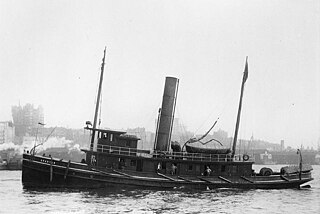 W
WUSS Spartan (SP-336) was a minesweeper that served in the United States Navy from 1917 to 1919.
 W
WUSS Spray (ID-2491) was a United States Navy trawler which served as a minesweeper and was in commission from 1918 to 1919.
 W
WUSS Surf (SP-341) was a minesweeper that served in the United States Navy from 1917 to 1919.
 W
WUSS Sussex (SP-685) was a commercial fishing freighter acquired by the U.S. Navy during World War I. She served as a minesweeper on the U.S. East Coast through the war and was sold after the World War I Armistice.
 W
WUSS Tasco (SP-502), was a United States Navy minesweeper and patrol vessel in commission from 1917 to 1919.
 W
WUSS Tide (SP-953) was a minesweeper in the United States Navy.
 W
WUSS Washtenaw County (LST-1166) was a Terrebonne Parish-class tank landing ship in commission in the United States Navy from 1953 to 1973. Named for Washtenaw County, Michigan, she was the only U.S. Navy vessel to bear the name. It is currently derelict. In October 2008, it was reported to be at the southeastern tip of Lord Island on the Columbia River in Rainier, Oregon at 46°07′18″ N 123°00′51″ W next to the Oregon shoreline. It is listed as a derelict vessel by the interagency Derelict Vessel Task Force, and has suffered damage from vandalism and looting between 2005 and 2008. While some had hoped to restore the ship as a museum ship, there is no funding or plan to do so.
 W
WUSS Waxbill (AMc-15) was a coastal minesweeper of the United States Navy. The ship was built as the commercial wooden-hulled purse seiner Fulton Shipyard, Antioch, California in 1936.